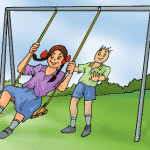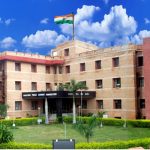Class 6 Chapter 9: The Living Organisms and their Surroundings
HABITAT
- The surrounding where organisms live is called a habitat.
- The plants and animals that live on land are said to live in terrestrial habitats. Example: forests, grasslands, deserts.
- The habitats of plants and animals that live in water are called aquatic habitats. Example: ponds, swamps and lakes.
- The living things such as plants and animals, in a habitat, are its biotic components.
- Various non-living things such as rocks, soil, air and water in the habitat constitute its abiotic components. Abiotic factors are important for all living organisms.
ADAPTATION
- The presence of specific features or certain habits, which enable a plant or an animal to live in its surroundings is called adaptation.
- It does not take place in a short time.
- Over thousands of years, the abiotic factors of a region change.
- Those animals which cannot adapt to these changes die out, and only the adapted ones survive.
SOME TERRESTRIAL HABITATS:
DESERT
- There is very little water available in the desert. It is very hot in the daytime and very cold at night in the desert. The animals and plants of the desert live on the desert soil and breathe air from the surroundings.
- The body structure of a camel helps it to survive in desert conditions. It has long legs which help to keep its body away from the heat of the sand. It excretes small amount of urine, its dung is dry and it does not sweat.
- Since camels lose very little water from their bodies, they can live for many days without water.
- Animals like rats and snakes stay in burrows deep in the sand to stay away from the intense heat during the day. They come out only during the night, when it is cooler.
- Desert plants lose very little water through transpiration.
- The leaves are either absent, very small or are in the shape of spines. This helps in reducing loss of water from the leaves through transpiration.
- The leaf-like structure in a cactus is its stem. Photosynthesis in these plants is usually carried out by the stems.
- The stem is also covered with a thick waxy layer, which helps to retain water.
- Most desert plants have roots that go very deep into the soil for absorbing water.
MOUNTAIN REGIONS
- They are normally very cold and windy.
- The trees are normally cone shaped and have sloping branches.
- The leaves of some of the trees are needle-like. This helps the rainwater and snow to side-off easily.
- Animals have thick skin and fur to protect them from cold.
- The mountain goat has strong hooves for running up the rocky slopes of the mountains.
GRASSLANDS
- The light brown colour of a lion helps it to hide in dry grasslands when it hunts for prey.
- The eyes in front of the face allow it to have a correct idea about the location of its prey.
- A deer has strong teeth for chewing hard plant stems of the forest.
- The eyes on the side of its head allow it to look in all directions for danger.
- It has long ears to hear movements of predators.
- The speed of the deer helps them to run away from the predators.
SOME AQUATIC HABITATS:
OCEANS
- In the oceans, plants and animals are surrounded by saline (salty) water. Most of them use the air dissolved in water.
- All fish have a streamlined shape. This helps them move inside water.
- They have slippery scales on their bodies which protect them and help in easy movement through water.
- They have flat fins and tails that help them to change directions and keep their body balanced in water.
- Gills present in the fish help them to use oxygen dissolved in water
- Squids and octopus do not have a streamlined shape. They stay deeper near the seabed and catch any prey that moves towards them. However, when they move in water they make their body shapes streamlined.
- Dolphins and whales do not have gills. They breathe in air through nostrils or blowholes located on the upper parts of their heads. This allows them to breathe in air when they swim near the surface of water. They can stay inside the water for a long time without breathing.
PONDS AND LAKES
- Some aquatic plants float on water, some plants have their roots fixed in the soil below the water, while some are completely submerged in water.
- In terrestrial plants, roots normally play a very important role in the absorption of nutrients and water from the soil. However, in aquatic plants, roots are much reduced in size and their main role is to hold the plant in place.
- The stems of these plants are long, hollow and light.
- The stems grow up to the surface of water while the leaves and flowers, float on the surface of the water.
- In submerged plants, leaves are often highly divided, through which the water can easily flow without damaging them.
- Frogs have webbed feet which help them swim in water.
All living things have certain common characteristics
- Need food.
- Show growth.
- Respire. ( In sunlight, plants use carbon dioxide to prepare food and give out oxygen. During respiration, they take in oxygen and give out carbon dioxide. But respiration takes place day and night while food is prepared only during the daytime. The amount of oxygen released in the process of food preparation by plants is much more than the oxygen they use in respiration).
- Respond to stimuli.
- Excrete.
- Reproduce.
- Move. (Plants do not move but various substances in them move from one part of the plant to another).
- Die.
Read More: Chapter 8











